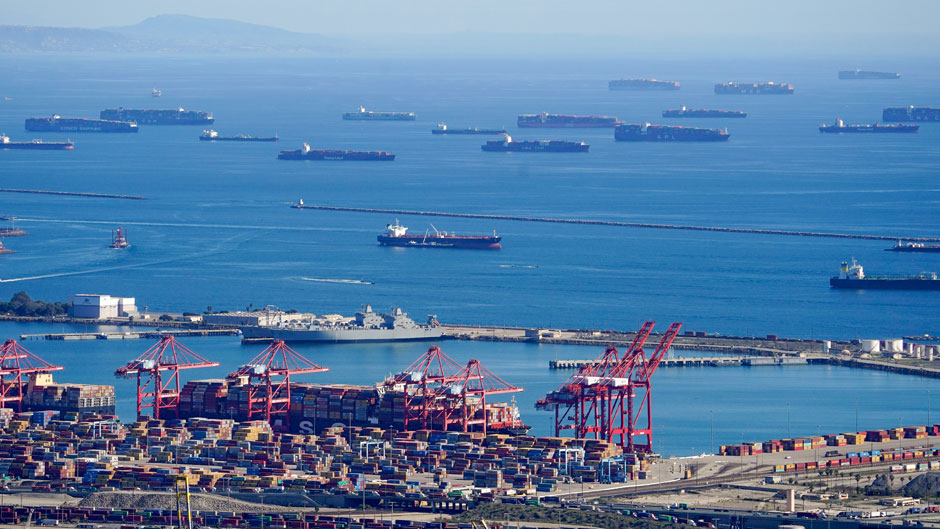Power outages in China disrupted production. A rumored fuel shortage prompted panicked drivers in the UK to overwhelm petrol stations and—create a fuel crisis. Labor shortages at Los Angeles and other ports left cargo ships waiting for weeks to be unloaded and the price of containers, out of circulation and in increasingly short supply, to skyrocket.
“These triggers create a vicious cycle that can persist on its own, and that’s what we’re in right now,” explained Alex Niemeyer, an associate professor of professional management practice at the Miami Herbert Business School and former global leader of McKinsey's Supply Chain practice. “Nothing is structurally broken with the supply chain, except that everybody is inefficient and using the system badly—they want to get more than their fair share.”
Niemeyer together with Arun Sharma, a professor of marketing and an expert in the field whose current research focuses on companies’ flexibility to shift practices in accordance with conditions, offered their perspectives on the current bottlenecked scenario.
“If you’re a company and the delivery time for the products that you need goes up, what do you do?” asked Niemeyer, noting this exact situation is occurring with a client. “You have to order more inventory because you need more protection and when you do you create a demand spike, not because your demand has gone up, but because you no longer trust the supply chain. And therefore, the company has to produce more and ship more, but shipping capacity cannot comply. So, now the delays are even longer, and you have pileups in front of the Los Angeles harbor.”
The tendency to seek more than your fair share, he said, reflects a “tragedy of the commons.” The term describes a standard economic behavior and dates to the ancient English practice of providing free grazing space—a field or commons—for sheep.
“Everyone could send their sheep to graze and that was great; it was efficient,” Niemeyer explained. “But then everyone was incentivized to have more sheep because they could graze for free on common land, but if everybody has more sheep then you ruin the land,” he explained. “So, as is happening now, when you take more than your fair share, individually it’s the right thing to do, but collectively it’s a disaster.”
Sharma, noting the disruption caused by the pandemic, detailed three factors that have exacerbated that impact.
“Supply chains are designed for, and accustomed to, relatively stable demand. And the pandemic has disrupted different areas of the world at different times and in different intensities,” he pointed out. “There was no margin for a pandemic and, of course, the chains got out of whack.”
The second factor, the China-centric supply model, is shifting but “we’re not there yet,” Sharma said, noting the Biden administration continues its efforts to find other countries to replace the supply line of goods from the Red Dragon.
The U.S., he urged, needs to continue to shift to a near shore model, more North-South and less East-West oriented. Canada and Mexico are already important markets, and he sees Mexico—already critical to the U.S. auto industry—as especially playing an integral role in U.S. trade.
Other business school economists, such as Alex Horenstein, have noted recently that the U.S. could reduce its dependency on China, reap its own benefits, and improve the economies of hemispheric neighbors and thereby stem immigration by reducing trading barriers with Latin American and Caribbean nations.
The third factor, according to Sharma, also has to do with unforeseen triggering events that overwhelm the already vulnerable supply chains. The only possible solution is for companies to plan and organize better, and to increase their “organizational liquidity”—their ability to adapt more quickly to external conditions.
“It’s been 50 years—since the oil crisis of the late 1970s—since we saw something like this, and the supply chain was not ready. The rapid rise and decline of certain goods and services has been devastating,” he said.
The problem is that the pace of change is so much more rapid than the ability of the organization to address that pace. Increasing organizational liquidity is Sharma’s current area of research.
“Working in teams, making your people more educated, looking at what you need to do and what you can let others do—proscriptions like these will increase liquidity,” he said. “We live in a very efficiency-based world, and unless we make organizations more liquid, even improving infrastructure will not make much of a difference to what we’re facing right now.”
In his time at McKinsey, Niemeyer helped many individual companies break out of similar vicious cycles within their company. Getting all the players to start “behaving” at the same time was the key, he pointed out.
“But you can't do that with a global system of thousands of companies, because you don't control their incentives,” he said. “Fixing this system would mean that the entire group coordinates to simultaneously change course, but here you have independent companies and independent consumers so it is not possible to tell them all to do the right thing at the same time. Why would they?” he asked rhetorically.
A recession is one of the few things that would actually help the situation, Niemeyer noted. “A supplier would decide that they’re not going to sell much. So, the demand for shipping would go down, then the demand for labor would go down. And we would catch up with the backlog, but obviously no one wants a recession,” he said.
“A vicious cycle is the fundamental underlying reason for the current backlog, and it frustrates everybody,” Niemeyer said. “It could be in two weeks something magically materializes, and it could be in two years we’re still in this.”
He compared the scenario to a highway traffic jam.
“They clear the accident, but the jam can prevail. Because while the cars in front may move, new cars keep adding to the backup. Finally, it dissolves. And you drive by and say: ‘Why was there such a traffic jam?’ ”

